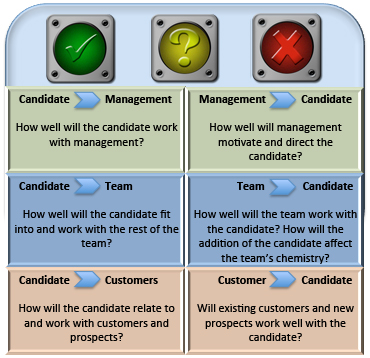Ready, set, hire
As the economy begins to heat up ”“ at long last ”“ we employers will once again be confronted with making more hires. The past four years have not been “normal” from a hiring perspective because we have been reluctant to add headcount, and our employees have been reluctant to leave their jobs ”“ so there has been far less turnover as well as hiring activity.
Both variables will change as we move towards the “new normal” of our economy. There has already been a substantial pickup in new hiring since the election, and turnover rates will once again approach historical averages, as people feel more comfortable with the risk of moving to a new employer in order to move up in compensation or responsibility, or to search for a better working situation.
Face it, hiring is a sporadic activity, and few are great at it. We aren”™t equipped with great tools to guide us in making hiring decisions, and we often lack a strategy that results in pursuit of the best people because we are not prepared to understand what “best” really means. Often that means we hire the first person who satisfies minimal qualifications rather than hold out for the best person we can find.
When developing an interview strategy, think about how you interview, and use a simple set of business tools to guide your decision making. While skills will always remain a must have ”“ if the candidate lacks the skills you require nothing will make them the right choice ”“ don”™t forget to look beyond the skills. We tend to fall in love with a resume and forget that we, our team and our clients, will be working with that new employee every day. Forgetting about fit can be a fatal error ”“ so to make sure you consider fit, use this simple “Red Light, Green Light” test and it will help you to make better hires. few are great at it. We aren”™t equipped with great tools to guide us in making hiring decisions, and we often lack a strategy that results in pursuit of the best people because we are not prepared to understand what “best” really means. Often that means we hire the first person who satisfies minimal qualifications rather than hold out for the best person we can find.
But measuring fit is hard, right? Not if you use the right business tool. This test will enable you to evaluate how the job candidate will fit with the three main constituencies every employee is engaged with.

Ask yourself the questions in the grid to the right, and look at your answers carefully. If you get a green light at all six stops ”“ then Mission Control will send you to lift off. If, however, you have a yellow light anywhere on the grid ”“ proceed with caution and bring the candidate back for additional interviews ”“ forcing the yellow light to move to either green, or red. And if you have a red light ”“ even one ”“ stop, do not pass go and do not hire the person, no matter how compelling their resume may be.
Most employers base their decisions on the candidate”™s knowledge and then hope for fit. The result is turnover that is higher than you want it to be or worse, you are stuck with a sub-optimal hire that you don”™t know how to dismiss.
Business tools are often process models, and simple process models are more likely to make an impact because they can be followed by everyone. This six stop, red light, green light process model is an easy way to determine if you have interviewed sufficiently to make the right hiring decision, and if you should move forward with an offer or decide to pass.
Use this tool and you will not only make better hires, you will eliminate bad hires, and improve business performance as a result. By putting fit foremost in the minds of interviewers, you will be more likely to build strong, loyal, effective teams that help grow your business year after year.
Donald J. Zinn is co-founder and managing partner of Exigent Search Partners Inc. Zinn can be reached at dzinn@Exigentsearch.com or 930-6846.